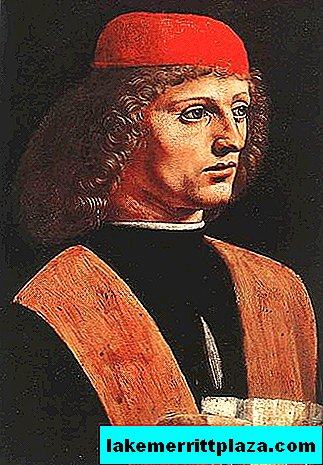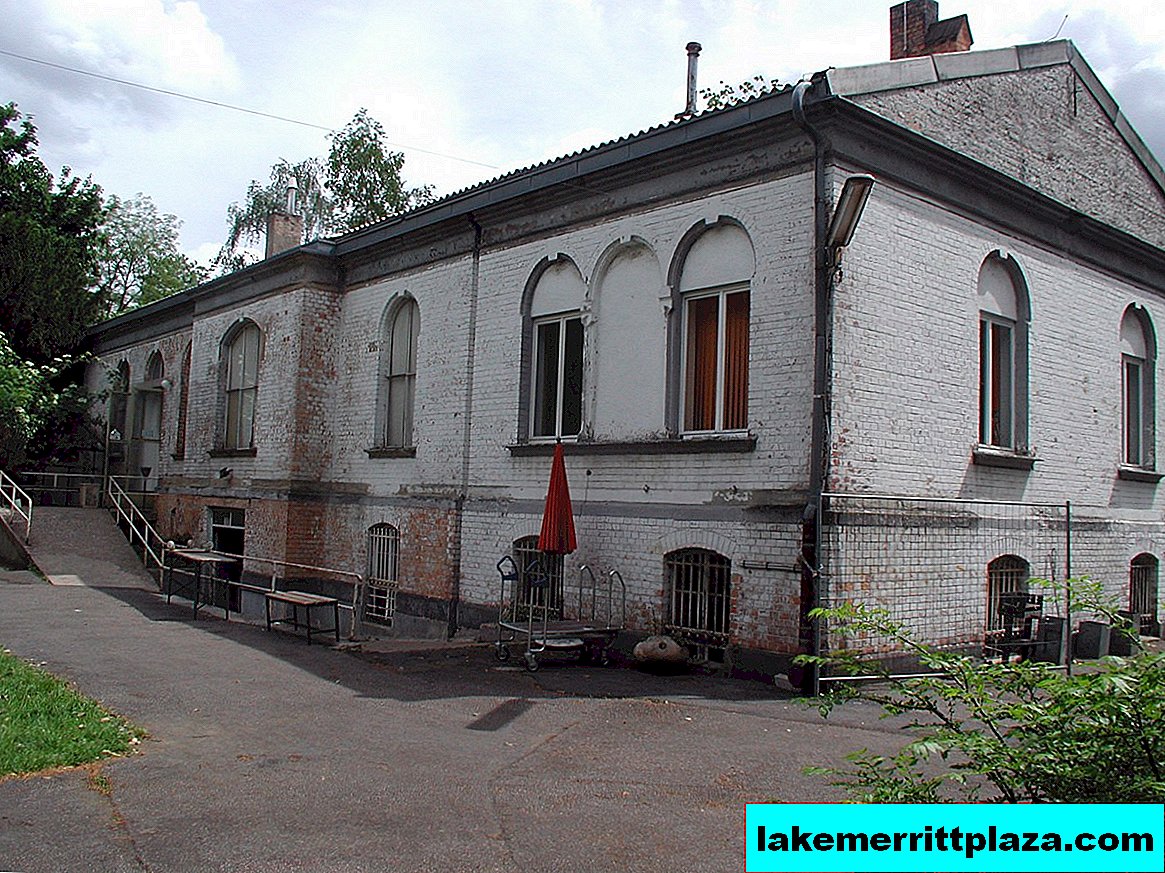Travelers traveling to Naples have heard of the many attractions in the surrounding area. But Naples itself is no less interesting. Including its museums, among which there are truly exceptional. In this article you will learn about the most interesting museums in Naples that should be put on a map of your visit to the capital of Campania, as well as their addresses, opening hours and ticket prices.
National Archaeological Museum of Naples
The Archaeological Museum of Naples is considered the largest collection of finds of the ancient era in southern Italy. It is here that exhibits from Pompeii and Herculaneum are stored, ideally preserved under the layers of frozen lava almost 2000 years after the eruption of Vesuvius.
For those who are not surprised by the collections of frescoes, mosaics, coins and jewelry, access to the Secret Cabinet is open - a repository of art objects and household utensils of an erotic nature.

The Archaeological Museum has the largest collection of finds of the ancient era
Throughout almost its entire history, access to the Secret Cabinet was strictly limited, and only in 2000, a collection of unusual artifacts became available to the general public.
- Address: Piazza Museo, 19
- Opening hours: Mon-Fri: 9: 00-19: 30, Tue - day off (if Tuesday falls on holidays, the day off is also postponed to Wednesday); On December 25 and January 1, the museum is closed.
- Tickets: adult - 15 euros, the first Sunday of each month for free.
Capodimonte Museum
The hunting lodge of King Charles III introduces visitors to the interiors of the royal apartments and a collection of masterpieces by the best European artists.
The works of Botticelli, Titian, Raphael, Brueghel and other masters, as well as weapons, furniture and tapestries are stored here. There are no secret rooms in the Capodimonte Museum, but there is a Chinese room with a valuable porcelain collection.

In the museum you can see the masterpieces of the best European artists
The Capodimonte Museum is surrounded by a vast park where you can not only walk among magnolias and lemon trees, but also admire 18th-century statues, as well as the Belvedere fountain, made of white marble and decorated with figures of dolphins and sea virgins.
- Address: Via Miano, 2
- Opening hours: Mon-Tue, Thu-Sun from 8:30 to 19:30, Wednesday - a day off; the museum is closed on January 1 and December 25
- Tickets: adult - 12 euros, for visitors from 18 to 25 years old - 8 euros, the first Sunday of each month - 4 euros
Museum of the Royal Palace of Naples
The impressive size of the royal complex corresponds in its scope to its internal wealth.
The facade of the palace is decorated with sculptures of eight Neapolitan rulers, and the interior is made up of not only luxurious pieces of furniture, but also paintings by Titian, Giordano, Preti, and Station.
The construction of the palace, designed by architect Domenico Fontana, dates back to the 17th century, but over the next 200 years, the palazzo was repeatedly completed and reconstructed. At one time, the governor of Napoleon Joachim Murat and the sister of the French emperor Caroline Bonaparte lived here.

The facade of the Palazzo Reale is decorated with sculptures of Neapolitan rulers.
Among the halls of the palace there are the Central Hall, the Throne Hall, the Don Quixote Hall with paintings illustrating episodes from Cervantes' novel, as well as the Hercules Hall. The latter got its name thanks to the collection of sculptures Farnese stored here, the most famous of which was Hercules.
In the chapel of the palace, an altar of the 17th century, made of semiprecious stones and bronze, amazes with its beauty. There is also its own court theater, built in 1768 by the architect Ferdinand Fugue.
By the way, in this very palace, the son of Peter I, Tsarevich Alexei, was hiding from his pursuers, and in 1845, the King of Naples was visited by Nicholas I and his wife. “Tamers of horses” by Klodt (exactly the same as those that show off on the Anichkov bridge in St. Petersburg) is a gift from the Russian tsar to his Neapolitan colleague in gratitude for the royal reception.
- Address: Piazza del Plebiscito, 1
- Opening hours: Mon-Tue, Thu-Sun from 9:00 to 20:00
- Ticket price: 6 euros, preferential - 3 euros
National Museum and Monastery of San Martino
Located at the foot of the castle of Sant'Elmo, the monastery of San Martino enjoys well-deserved attention of guests of the city. The views from the monastery gardens are no less beautiful than the frescoes and mosaics inside the complex.
Built in the XIV century and subsequently significantly expanded, in the XIX century the monastery of San Martino was completely abandoned. But, well, time puts everything in its place.

Wonderful views from the gardens of the convent of San Martino
Today, the museum of this monastery in Naples contains an extensive collection of paintings and sculptures of the 13th-19th centuries, as well as a collection of presepe - nativity scenes with miniature wooden and ceramic figures.
- Address: Largo S. Martino, 5
- Opening hours: Mon-Tue, Thu-Sun from 8:30 to 19:30, Wednesday - day off
- Ticket: 6 euros, preferential 3 euros
National Railway Museum of Pietrars
The Railway Museum is not located in Naples itself, but in the suburbs of San Giovanni a Teduccio. Having gone on a small voyage to the sea coast, you will make a great journey in time.
In the old workshops of the first railway workshop of the kingdom of two Sicilies collected a huge number of steam, heat and electric locomotives. The surviving footage of the video chronicles enliven the unique exhibits that are allowed to touch and inspect from all sides.

The halls of the Royal Palace amaze with luxurious decoration
One of the most valuable exhibits of the museum is the cars of the first train connecting Naples and Portici, as well as the royal wedding train, built in 1929 in honor of the wedding of the last king of Italy, Umberto II of Savoy, with Princess Maria Jose of Belgium.
- Address: Traversa Pietrarsa
- Opening hours: Thu: 14: 00-20: 00, Fri: 9: 00-16: 30, Sat and Sun: 9: 30-19: 30; Mon-Wed only for organized groups.
- Tickets: 7 euros, preferential 5 euros
Maritime Museum and Coral Museum
In several rooms of the Duke of Abruzzi Maritime Institute of Technology on the shores of Pozzuoli Bay, you can find out which ships plowed the Italian seas, which instruments and maps helped travel, and how navigation has developed over the past few centuries.
More than two thousand exhibits, including ship models, navigational instruments and ship mechanisms, are located in the halls, the names of which speak for themselves: Ship Hall, Navigation Hall, Design Hall, Machine Room. Rare written testimonies and photographs telling of long voyages by sea are also kept here.

The Museum of San Martino has an extensive collection of paintings and sculptures of the 13th-19th centuries.
Fans of marine subjects should also pay attention to the Coral Museum, opened in Naples in 2001 and located in the Umberto I Gallery.
The museum is conditionally divided into two parts, one of which acquaints visitors with the history of the development of coral processing technology, and the second directly demonstrates the best samples of coral jewelry made by Giovanni Ascione, the founder of the coral processing workshop in Naples.
Maritime Museum
- Address: Via di Pozzuoli, 5
- Opening hours: Mon-Fri 9: 00-13: 00 and 14: 00-17: 00, Sat: 9: 00-13: 00; Sunday is a day off
- Ticket price: 5 euros, preferential 3 euros
Coral Museum
- Address: Angiporto Galleria Umberto I, Piazzetta Matilde Serao, 19
- Opening hours: Mon-Sun 10: 30-13: 30 and 16: 30-19: 30 by appointment
- Tickets: 5 Euro
Gaetano Filangeri Museum
A somewhat eclectic collection of medieval weapons and books, as well as furniture and arts and crafts, was donated to the city in 1888 at the behest of its owner, Gaetano Filangeri, Prince Satriano.
Among more than 3,000 exhibits, there are wooden sculptures, majolica, Chinese fabrics, porcelain and glass products, medals, coins and preserves (figures of shepherds from nativity scenes).

In 1955 Pinyatelli clan gave the city a villa with all the decoration
Separately, it is worth highlighting the Agate room, where the canvases of the Neapolitan painters Jusepe de Ribera, Luca Giordano, Andrea Vaccaro, Bernardo Lini are stored.
The museum is located in the palace building of the Palazzo Cuomo of the 15th century.
- Address: Via Duomo, 288
- Opening hours: Mon-Sat: 10: 00-16: 00, Sun: 10: 00-14: 00
- Tickets: 5 Euro
Villa Pignatelli
The luxury of this place can satisfy the most demanding tastes - at one time the villa belonged to Baronet Ferdinand Acton, the German banker Karl Rothschild and Prince Diego Aragon Pignatelli Cortes.
It is no coincidence that the name of the prince was immortalized in the name of the museum: it was the Pignatelli family that turned the villa into a meeting place for intellectuals and aristocracy, transferring the house to the city in the middle of the 20th century.
In addition to the numerous halls where the original furniture was preserved, as well as valuable samples of the most expensive porcelain in the world, Villa Pignatelli owns a separate fund of Italian, German and English carriages and carriages of the century before last.

Villa Pignatelli has a rich collection of carriages and carriages of the 19th century.
The garden, broken at the villa, is also remarkable in its own way: here you can see rare plants and interesting architectural structures, including a neo-Gothic turret.
- Address: Riviera di Chiaia, 200
- Opening hours: Mon, Wed-Sun: 08: 30-17: 00, Tuesday - day off
- Tickets: 5 Euro (Pignatelli Museum, Carriage Museum, Park), 2 Euro (Park Only)
To easily find information on the most interesting museums in Naples just before your trip, save this article to your social network.






